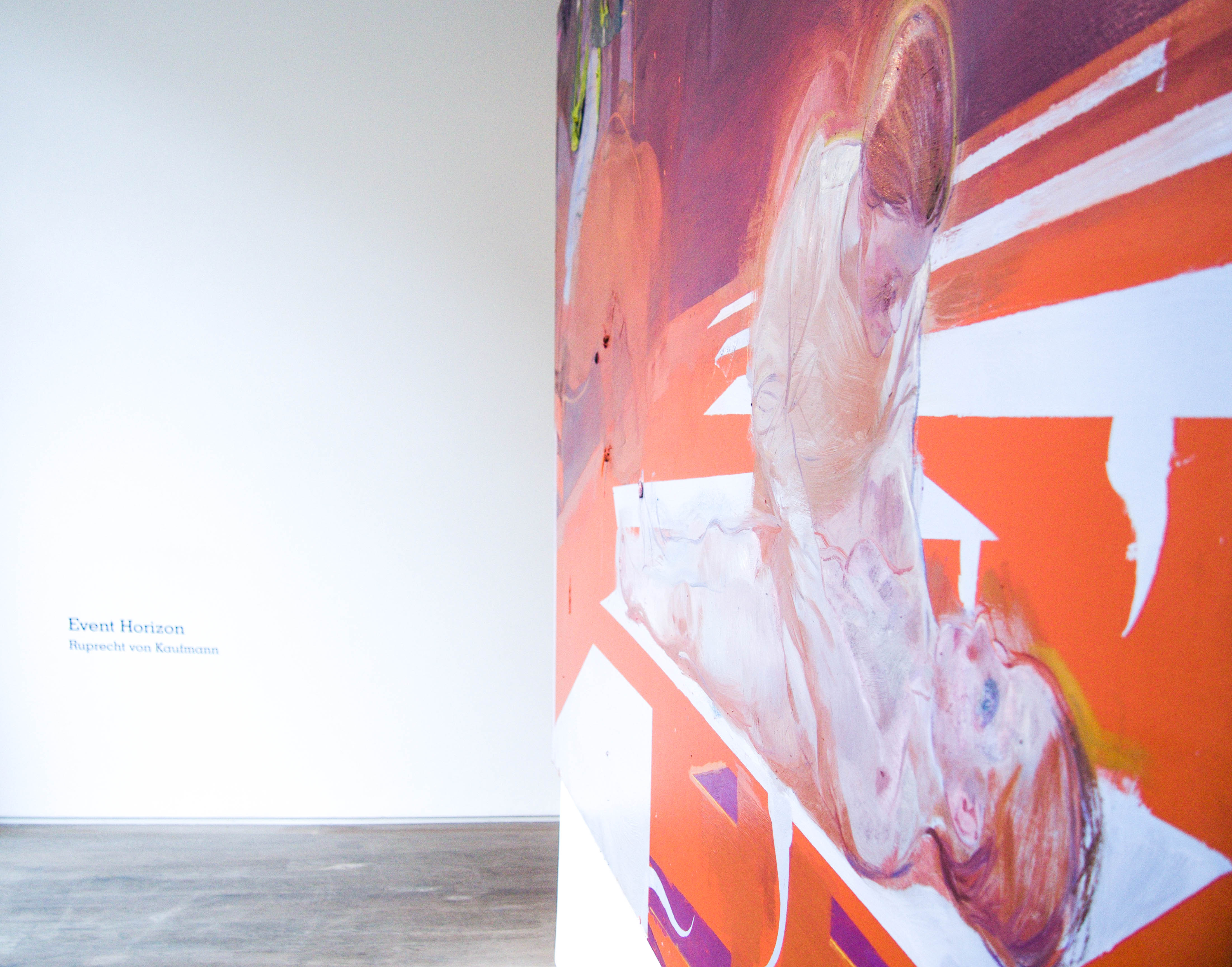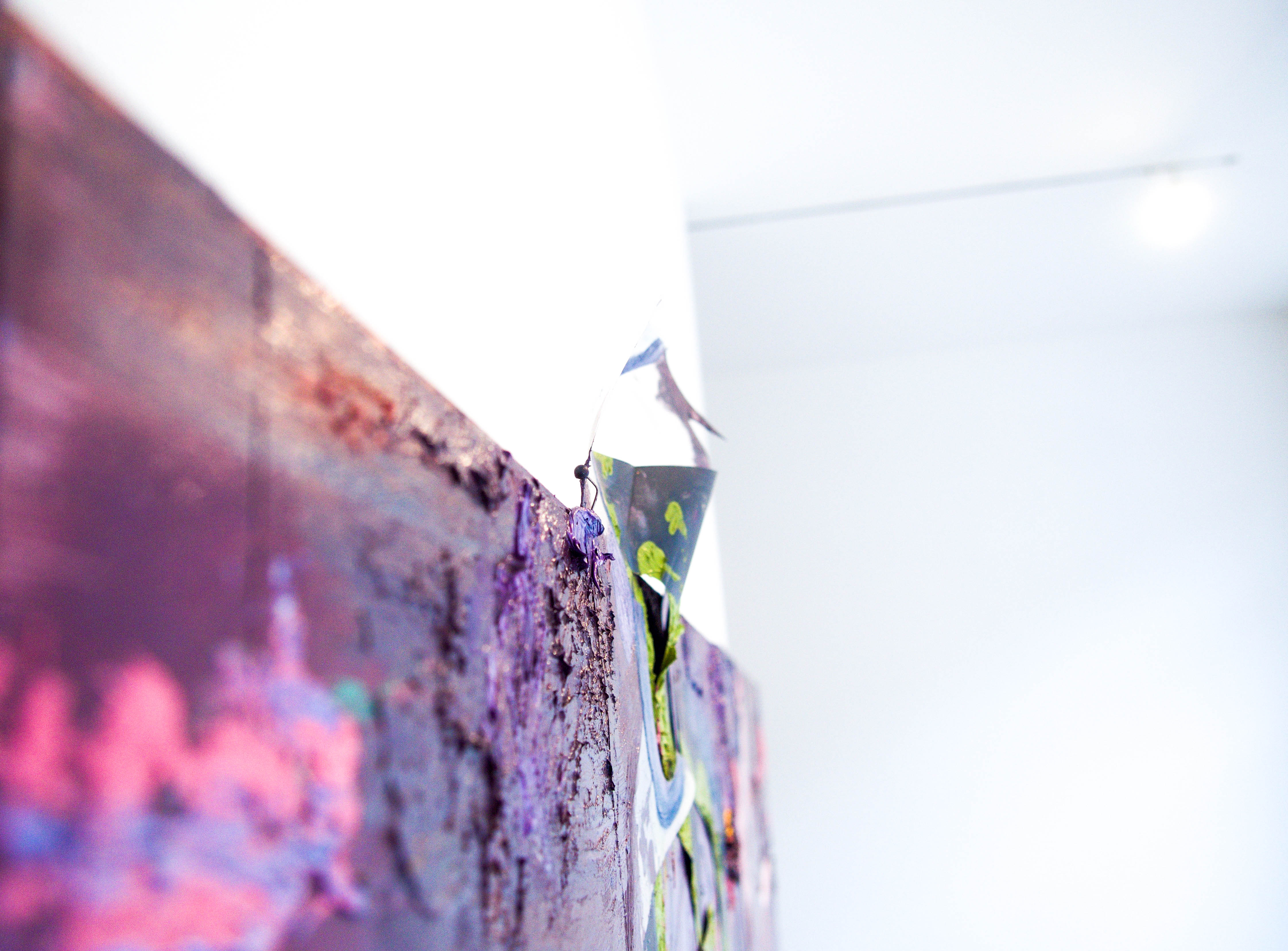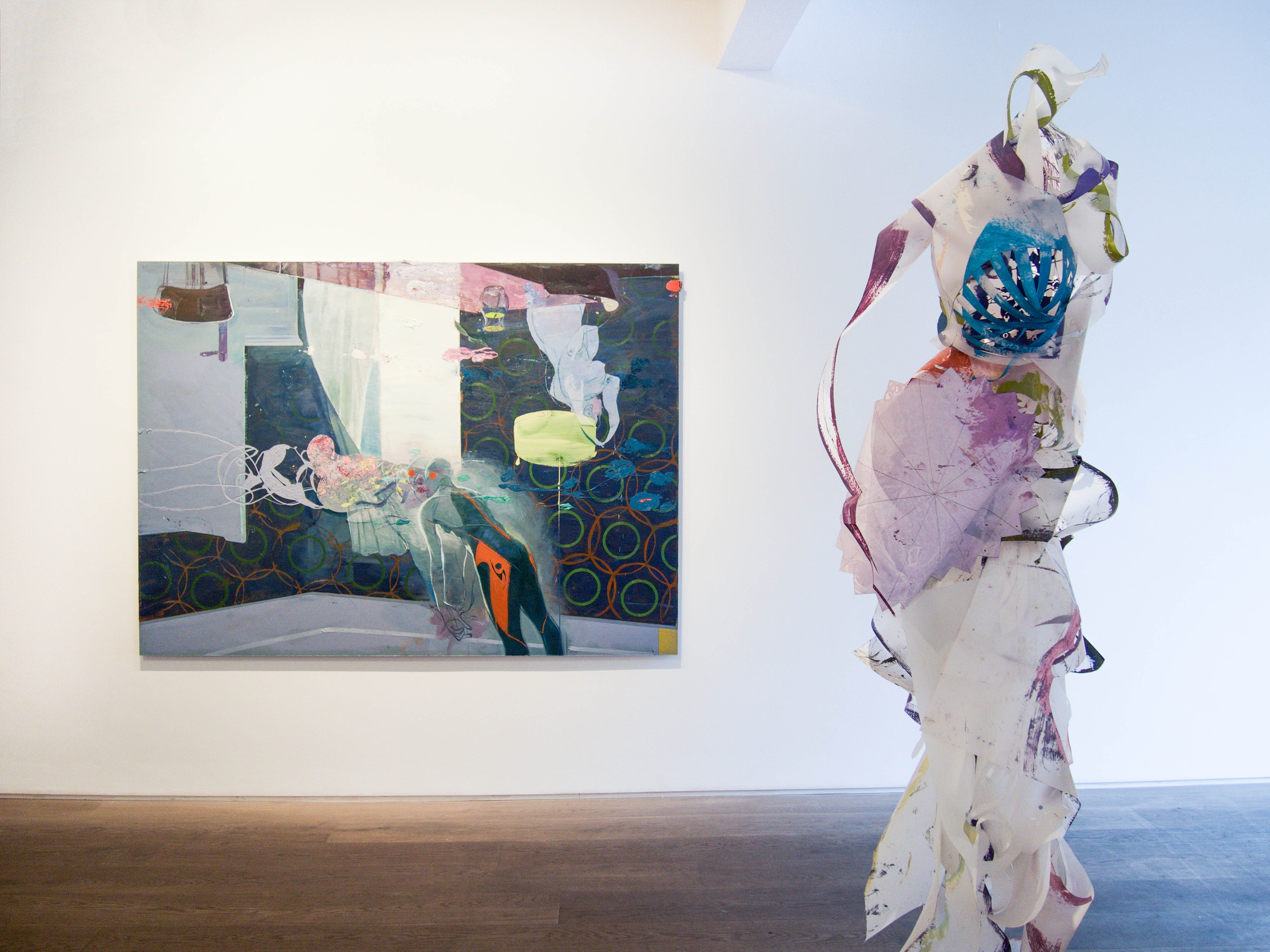“When I paint, that’s what I am still looking for: to take something about our world, change it a little bit, break some of the logic and through that, crack open the veneer of habit.” Attentive to the properties of space and material, Ruprecht von Kaufmann’s work dissolves dimensional boundaries.
Working since 2007, the artist has won critical acclaim across Europe having recently featured in an exhibition showing 50 years of German art in Riga, Latvia, alongside names such as Joseph Beuys and Gerhard Richter. Through distortion of space within their content and form, his paintings lead us into an alternative world, dreamlike yet surprisingly familiar. He is currently showing a solo exhibition, Event Horizon, at Kristin Hjellegjerde Gallery, London.
Texture interacts with subject in von Kaufmann’s paintings, with collage and heavy impasto surfaces lending a bodily quality to some figures, whilst the dilution of paint renders others wafer-thin or ghostlike. Varying upon each canvas, the characters morph to reflect narratives that break down boundaries of being. Within a room has been deliberately flipped on its head so that ceiling is now the floor, figures in Lying on the Sofa (2016) float away from the viewer, becoming gradually wispier. This alternative universe aims to bring the artist’s childhood perspective, lost over time, to life and in doing so represents the surreal yet everyday experience of falling asleep.
Narrative is similarly supported by an emphasis on merging disparate colours. In Save Me (2017) that opens the show, a woman lies down whilst another cares for her like a doctor or nurse. Behind, two planes of deep purple and orange collide, fusing and bleeding into one another, to signify an emotional connection formed during times of conflict or strife. Contrasts on the exterior disclose an inner equilibrium, one crucial to the artists’ ideas that interconnectivity lies far beneath the surface of our being.
Elsewhere, a series of smaller works, described by von Kaufmann as “playgrounds in which ideas start to take on more concrete shape”, again explores properties of dimensionality. The paper itself is folded out over an image or holes are burnt straight through to create layers that disrupt flatness and create a physicality within the work. This becomes a recurring aspect of his monumental paintings where materials creep from the canvas edge and bring figures into our sphere. As such his works have an in between quality, a limbo that reflects their bizarre, half-formed subjects.
Cast-off materials from von Kaufmann’s creative process are not wasted but repurposed to become his sculptures, eclectic creatures that, like the figures in his paintings, exist halfway between one form and another. This interest in leftover pieces informs The God of Small Things, a series of paintings of objects that belonged to his recently deceased father-in-law. An old cloth, a crumpled envelope, a glove: things that may seem worthless gain sentimental value simply because they were once his. Small circular canvases have the effect of putting these objects under a spotlight, singling them out as important.
Given free rein over curation at Kristin Hjellegjerde, von Kaufmann reflects back on his body of work and entire process to reveal a mature confidence in what he creates. The blending of painting with a sculptural approach ties his oeuvre together. Details in one painting, like a carved into surface or material additions that spill from the canvas, reappear in another acting as clues for viewer to trace and so each work is given equal value. Individually, the works are otherworldly; together, they are totally immersive.
By continually collapsing boundaries between forms, von Kaufmann exposes an ambiguous space in between that governs our human experience. In his own words, “when I paint, that’s what I am still looking for: to take something about our world, change it a little bit, break some of the logic and through that, crack open the veneer of habit.” Everything familiar is made strange, then familiar once more, echoing the puzzling experiences of life so that we gain a fresh pair of eyes on the complexity of emotional experience at once tangible, at once ephemeral, but always unavoidably present.
‘Event Horizon – Ruprecht von Kaufmann’ is showing at Kristin Hjellegjerde Gallery, London until 25 March
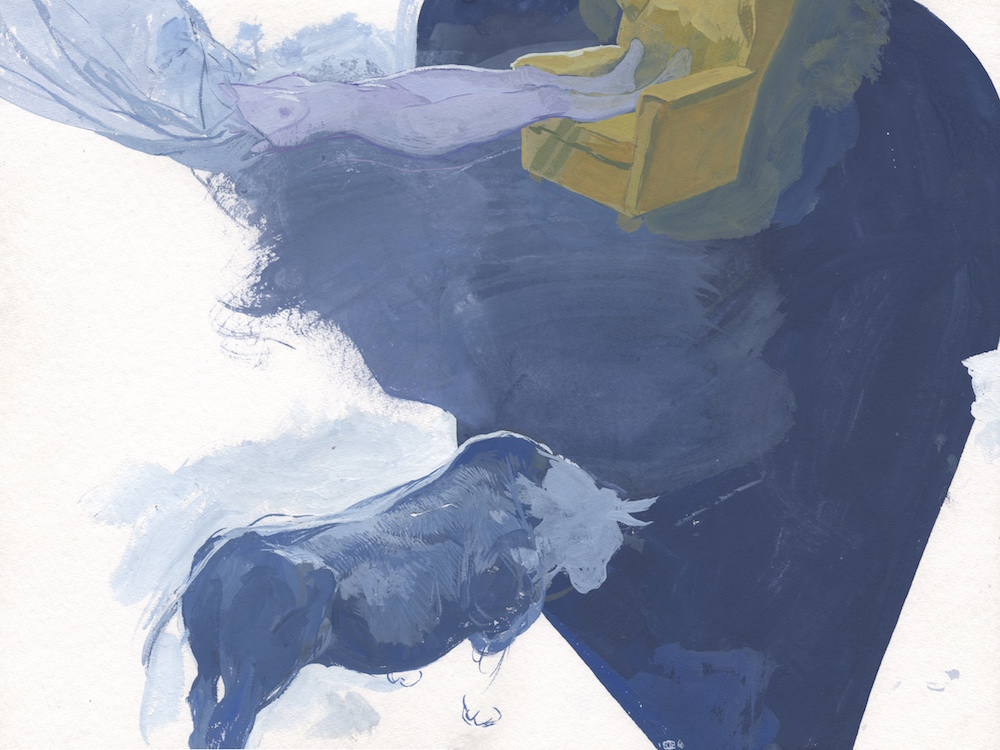
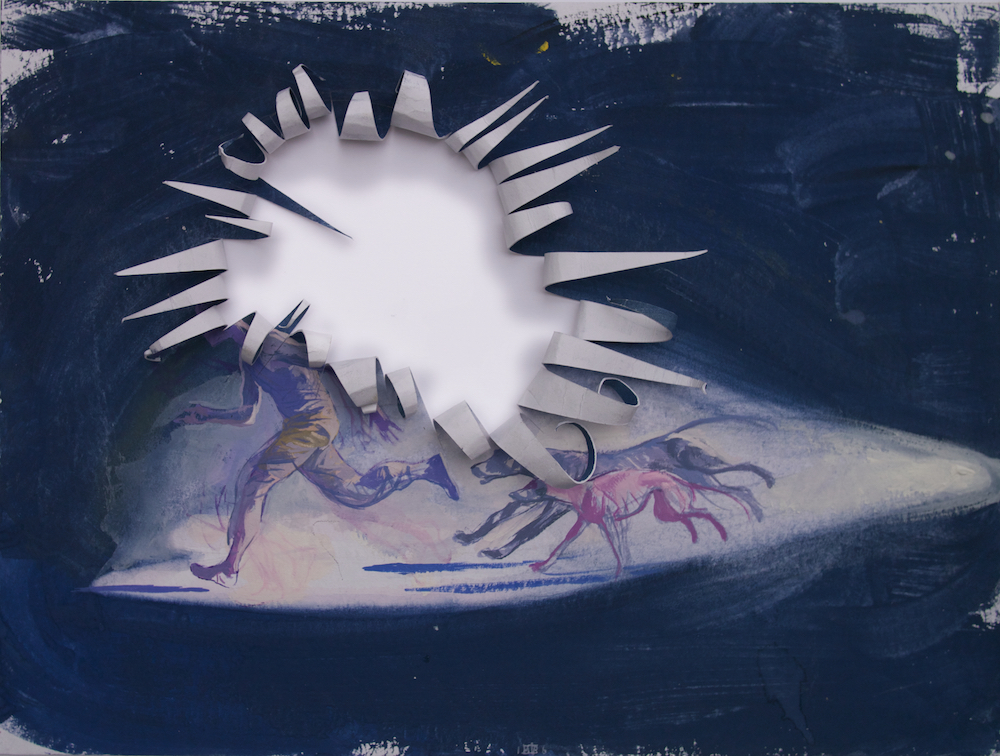
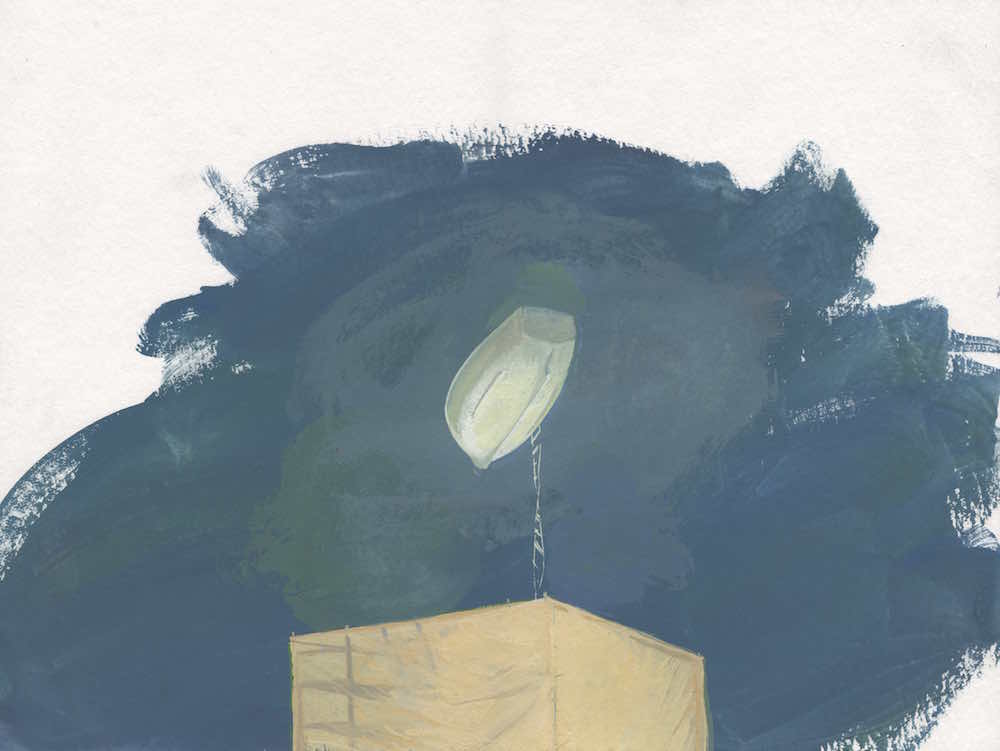
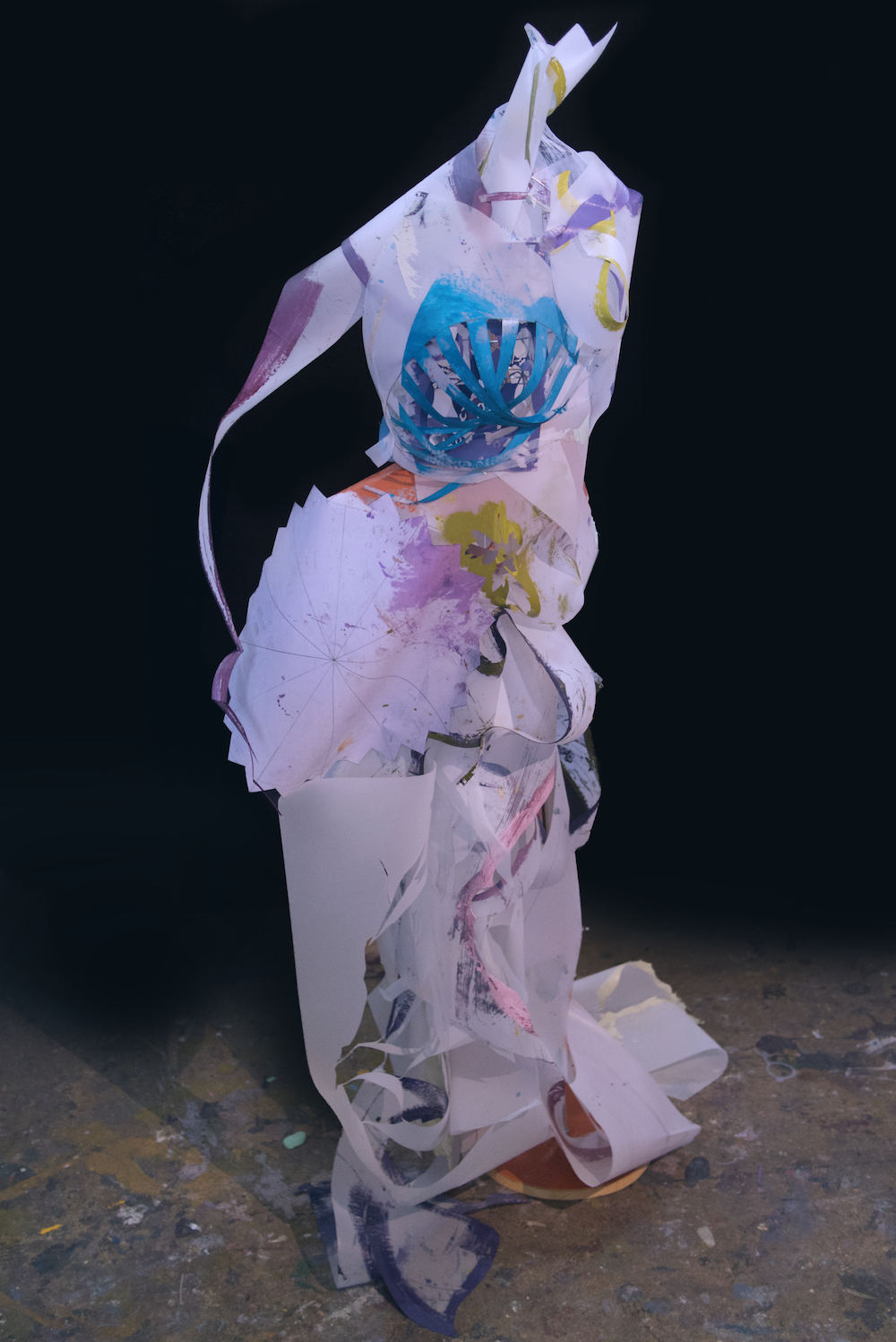
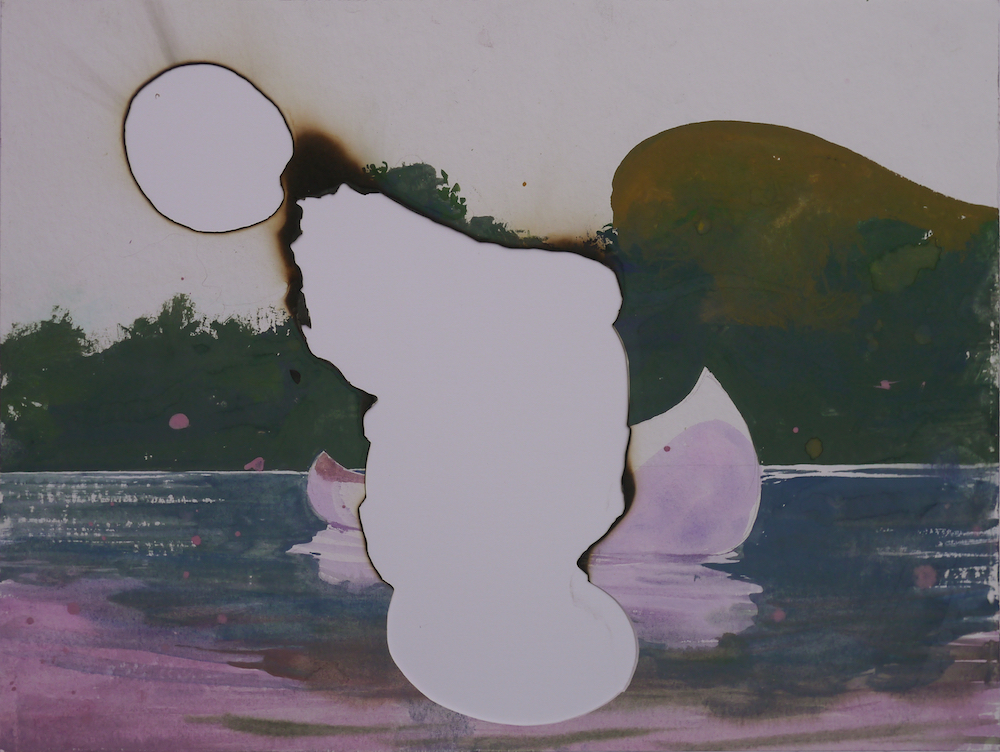
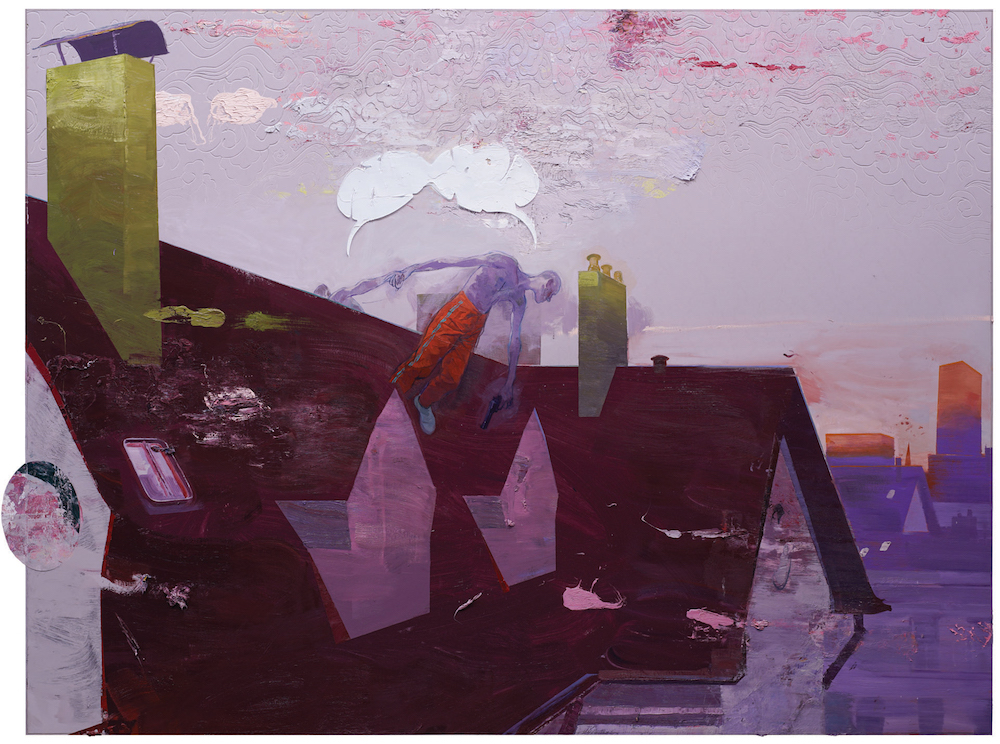
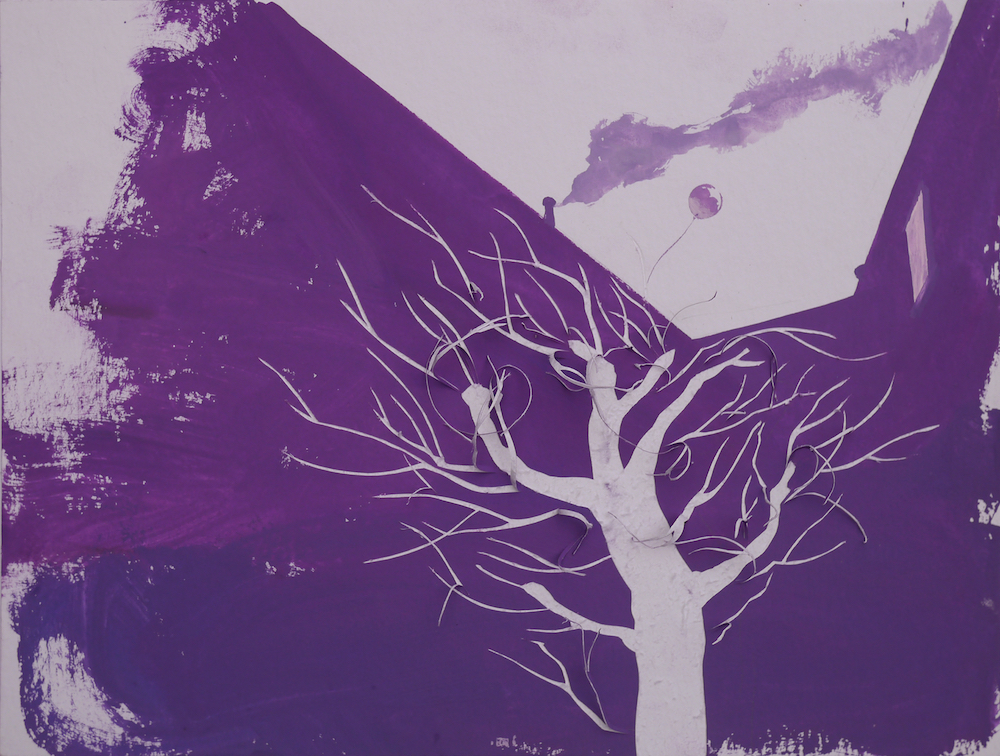
Papertree, 2016. Gouache on Papier 30 x 40 cm | 11 3/4 x 15 3/4 in


